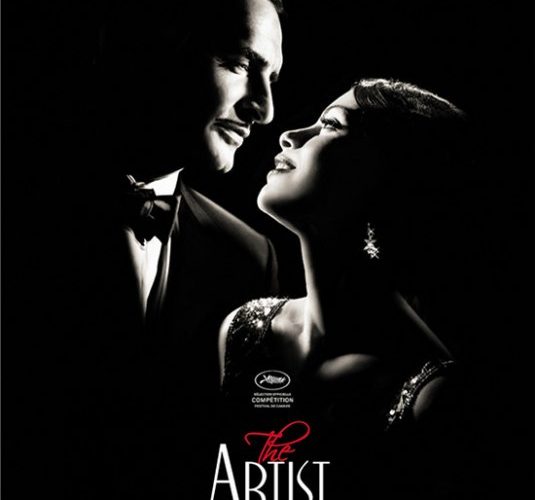
While running around from screening to screening in Cannes, I was fortunate enough to sit down one on one with director Michel Hazanavicius and actress Berenice Bejo to talk about their latest collaboration, the silent black and white film The Artist. Both were extremely gracious with their answers and it was very fascinating to learn what motivated the director to want to make a silent film and what challenges the actress faced in acting without sound.
The Film Stage: What inspired you to make a 1920’s style silent film and what where the challenges in convincing the producers to go along with it?
Michel Hazanavicius: It’s not easy to quickly tell what an inspiration is, because it is a combination of many things. And I used the success of my two previous movies to do it. When people asked me what I wanted to do, I’d tell them the truth and say that this is what I want to do, and I felt that this was a good time to do it, because If I didn’t do it now, I’d probably never do it. So I tried and it was not easy. Another inspiration was the actors because I wanted to work with Berenice Bejo and Jean Dujardin and I really thought that they had something very special and brilliant for that kind of movie. I really believe that Berenice is incredible for 1920s style silent films and the same for Jean—not only with their facial expressions but with their energy and I think that that is something that they don’t control. I really wanted to do a melodrama and try to make something more sentimental and touching without any irony. I think that the most challenging thing for me is not trying to be funny and taking the risk to be the stupid guy that is disconnected with reality and the problems of reality. This is not how I live, but I wanted to do that kind of charming, lovely, modest story. This idea is very difficult to sell to producers, but with the success of OSS, I took the chances and I met Thomas [Langmann] who was crazy enough to help me. He did a wonderful job and had a wonderful attitude because he trusted me and he allowed me to do it with his own money which is very rare. And even when we needed money for the project with the money we had and the money we needed, he put out a lot of money from his own pockets, and I am very grateful for that—he’s the perfect producer.
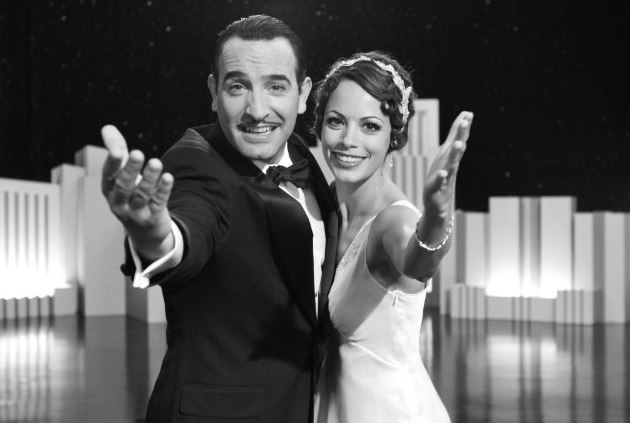 Where there any directors that inspired you for the concept of the film, and what were the silent films you focused on while researching the making of the film?
Where there any directors that inspired you for the concept of the film, and what were the silent films you focused on while researching the making of the film?
MH: I think there are a lot of directors who influenced me and who I would love to work like. I think Billy Wilder is probably the best director. He did the best movies and I absolutely adore Billy Wilder. I think he is the best. But for this one, I watched a lot of silent directors who were absolutely great like John Ford and Fritz Lang, Tod Browning, and also some very modern directors like The Coen Brothers. The directors take the freedom within their own movies to be melodramatic or funny when they chose to be. They do whatever they want and they don’t care about the genre. I love that freedom.
The details in this film as far as trying to recreate a silent film are impeccable. Can you tell us a little bit about the techniques you used to create that kind of look?
MH: We shot in film and color film and we did black and white, and we tried to work with a lot of gray. When the captions are at the top, the contrast is very strong, but when they are on the bottom they are very gray. This is the kind of the things that they would do, because those are the tools that they were playing with. When you do not have the dialogue to explain things, you will use everything to show and to tell the story. I think that this is what makes you believe that it is impeccable. I try to respect the rules of the silent movies and I tried to make signification to make sense, and also the crew were very good and the fact that we shot in LA in the real Hollywood, studios and houses. We shot in the bed of Mary Pickford, and you cannot be any more accurate than that, so that helped a lot. And really the hair stylist and makeup artists and costume designers were all very good as well.
Berenice, can you talk about the challenges of working in a silent film where you are probably used to relying on your voice and that as your main medium to communicate to the audience but in this you had to use your facial expression and body languages. Can you talk about those challenges?
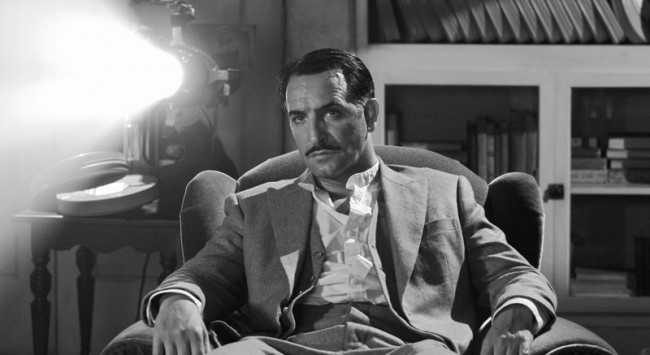 BB: It was a long process and it started when he started writing. I started to bring home books and pictures and going to see movies. What I wanted to find first was a glamorous of the spirit because today in France movies are very realistic and first degree, so I never had the chance of being glamorous and so I’d just read books and watch movies, and after a while I’d get into the universe of the spirit and it was really fun because I would study actresses like Joan Crawford who would really inspire me. I fell in love with Crawford because when she was twenty or twenty five, she would dance and talk and sing and do the things that Peppy’s character needs to do. In every scene you see her in, you need to love her, but I didn’t want Peppy to be arrogant. I wanted her to be innocent and take everything that was given to her but not in an arrogant way. She was very confident and true to herself. Even in the very beginning when she would bump into George Valentine and people would start taking pictures of her, she never thought “I’m with George Valentine. I need to get a picture with him.” She’s like “oh that’s funny. Everyone’s taking pictures!” What she has takes her to the top, and Joan Crawford was like this. I spent hours on the internet looking at how glamorous actresses winked and how they would put their hand on their waist, and I was told to look at how they would walk in a room and how her body takes place of everything. So I was looking around trying to understand the code of the spirit, and then at one point I had to forget everything and trust the director, my partner and myself. I said, “I am here because I deserve it and because I’ve worked hard and now let’s have fun.” I really enjoyed being Peppy Miller. She was an amazing character and her energy followed me everywhere. When I talk about her I want to be her again. She’s an inspiring character and a beautiful present that Michel gave to me and Jean. The fact that it was silent didn’t change my work. I speak in the movie, but you don’t hear. And when I don’t, the scene doesn’t need words. So as long as you have the character, the rest will follow.
BB: It was a long process and it started when he started writing. I started to bring home books and pictures and going to see movies. What I wanted to find first was a glamorous of the spirit because today in France movies are very realistic and first degree, so I never had the chance of being glamorous and so I’d just read books and watch movies, and after a while I’d get into the universe of the spirit and it was really fun because I would study actresses like Joan Crawford who would really inspire me. I fell in love with Crawford because when she was twenty or twenty five, she would dance and talk and sing and do the things that Peppy’s character needs to do. In every scene you see her in, you need to love her, but I didn’t want Peppy to be arrogant. I wanted her to be innocent and take everything that was given to her but not in an arrogant way. She was very confident and true to herself. Even in the very beginning when she would bump into George Valentine and people would start taking pictures of her, she never thought “I’m with George Valentine. I need to get a picture with him.” She’s like “oh that’s funny. Everyone’s taking pictures!” What she has takes her to the top, and Joan Crawford was like this. I spent hours on the internet looking at how glamorous actresses winked and how they would put their hand on their waist, and I was told to look at how they would walk in a room and how her body takes place of everything. So I was looking around trying to understand the code of the spirit, and then at one point I had to forget everything and trust the director, my partner and myself. I said, “I am here because I deserve it and because I’ve worked hard and now let’s have fun.” I really enjoyed being Peppy Miller. She was an amazing character and her energy followed me everywhere. When I talk about her I want to be her again. She’s an inspiring character and a beautiful present that Michel gave to me and Jean. The fact that it was silent didn’t change my work. I speak in the movie, but you don’t hear. And when I don’t, the scene doesn’t need words. So as long as you have the character, the rest will follow.
Was there actual dialogue that was written for Peppy?
BB: Some was written, but the dialogue was given sometimes the day of filming.
MH: If I gave them dialogue early on, they would study it, and I didn’t want that.
BB: Sometimes we had to improvise. I hate to improvise because I felt like I couldn’t find words.
MH: I tried to tell them that dialogue is very useful because we can communicate very quickly, but we don’t really say important things with the language. When you’re with a small two year old child and he doesn’t speak he smiles, his smile is very moving, more than a smile of another. When you’re with your wife, you don’t say I love you to your wife every day but the ways you look at her and your actions are another way to communicate. Don’t focus on dialogue, only focus on what you’re expressing.
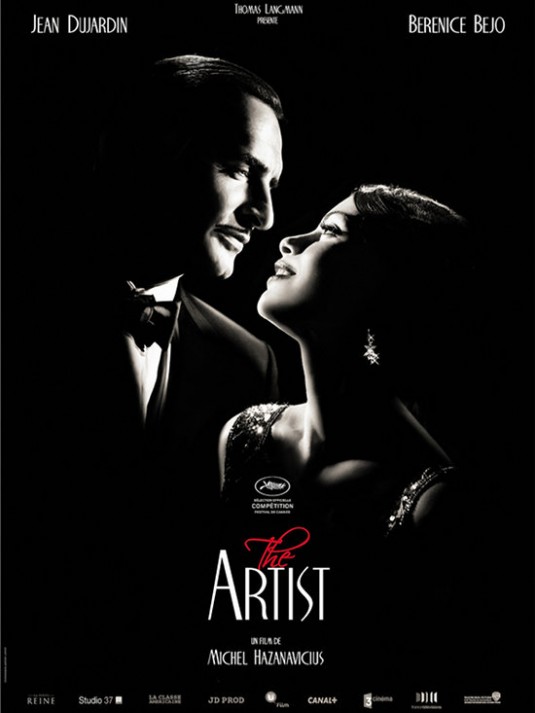 Did that effect they way that you directed compared to your previous films because you are not working with sound. Were you directing when they were acting, instructing them while the cameras were rolling? Berenice, as an actress how did it feel different from the OSS films. Did you feel the direction was different?
Did that effect they way that you directed compared to your previous films because you are not working with sound. Were you directing when they were acting, instructing them while the cameras were rolling? Berenice, as an actress how did it feel different from the OSS films. Did you feel the direction was different?
BB: No. It was the same. He would talk sometimes during the shots, but the few times he did that was personally annoying for me. It would take me out of the scene, because when you act you’re in your own world. But sometimes it would help me. He didn’t do it that much.
MH: Sometimes when an actor says something almost perfect, but you know you have to edit it, if you tell them to change something immediately, it will come out great. For this one, I put on music during the shots, and they played with music. That changed a lot of things and at the end they were addicted to that. I would use all of the classical scores from the Hollywood age—all the great composers were with them on set. I would play music from a French movie when the bus would arrive to the set.
BB: The music had so much energy, and I would be so happy coming out of the bus, and it was the best direction that he could’ve given me. I heard the music and I knew what to do.
MH: This is the problem with language, and this is what makes silent movies fun, because the connection with them, me or the audience is not with the language. There’s no question of interpretation of what we are saying it’s just about feeling. You create your own story.
BB: This scene is the perfect example, when I get of the bus, I am happy and an smiling and walking, and I thought if the music was not on maybe I wouldn’t have felt right to be smiling all of the time. So I thought I will I feel the same way without the music, in the next film. Maybe I’ll put my iPod in two minutes before. But truly, I’ve listened to actors say that they loved to listen to music before a shot, and I really understand that now because it puts you in the mood and gives you energy.
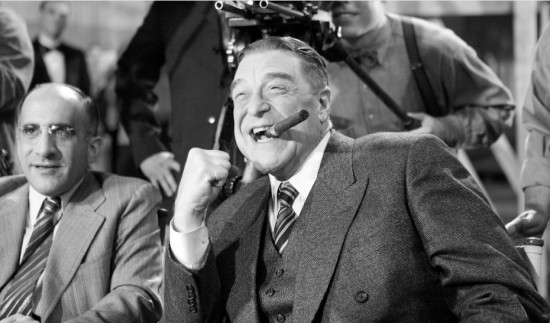 What was the toughest scene for you as both actress and director in the film?
What was the toughest scene for you as both actress and director in the film?
BB: When the stars met, it was hard for me because he was very sad and I was very happy. I had to improvise and he did not speak at all. I had to do the whole scene over and over, and it was really hard. But when I was working on the script, I didn’t think the scene was going to be difficult. I thought the blackmailing scene would be hard but it was the easiest.
MH: For me nothing was very difficult because it’s very difficult to make it look like it is easy. But I remember one sequence with the tap dancing. We stopped reeling because everything seemed so fake and not natural. It was bad, and it didn’t work, so I took thirty of forty minutes to try to fix that and in the end I think it’s a good sequence.
This film has such an universal appeal. How do you hope that audiences will react to it? Do you think you’ll ever make a silent film again?
MH: No. I think it’s a one-shot. I think I’ll do it if I want to or have the will to do it, but really I don’t know. I loved to do it and I think it was a good story. If I have another idea, maybe I’ll do another one. And for the audience, I hope they will understand that it’s a small and modest movie. It’s a charming love story, so I don’t want them to expect anything else. If they like it, that will be perfect.
The Artist hits theaters late 2011 via The Weinsten Company. Check out our Cannes review here and the trailer here.

